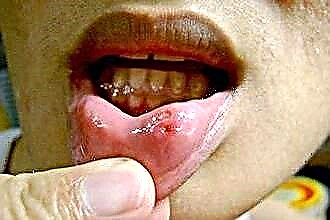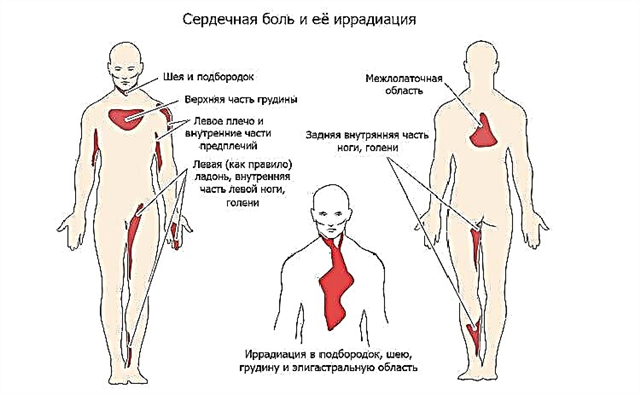Breastfeeding (Breastfeeding) is the key to good health of the baby and the bond between mom and newborn. Lactation is a physiological period in a woman's life, which requires careful attention to the general condition of the woman in labor. Postpartum stress, short sleep and inappropriate nutrition contribute to the development of disorders. In addition, there is often low blood pressure in a nursing mother, which affects the quality and quantity of milk, the woman's ability to care for the baby.
How does a woman's pressure change during lactation?
During pregnancy, under the influence of a strong hormonal background, a growing uterus and the accumulation of fluid in the body, women often notice high blood pressure, especially in the third trimester. After childbirth, the condition of most mothers normalizes, however, different options are possible:
- normal pressure - is determined in a physically healthy woman (most often after 2 or 3 births);
- high blood pressure (indicators above 140/90 mm Hg) - sometimes it happens in women in labor with hypertension, or in women who have chosen mixed or artificial feeding of the child;
- low pressure (indicators less than 110/70 mm Hg). Such values are most often found in primiparous women with impaired vascular tone (vegetative dystonia), dehydration. In addition, significant reductions are associated with breastfeeding.
Jumps in indicators with severe symptoms during the day are a sign of serious hormonal or cardiovascular disorders, which requires medical attention.
Why does the pressure often drop during GW?
Lactation is the postpartum period, which is characterized by gradual stabilization of hormonal levels, and can last from 3 months to 2 years, depending on the individual characteristics of the woman. Women in labor who exclusively breastfeed their babies often complain of a noticeable drop in blood pressure to 80/60 or 70/50 mm Hg.
The main reasons for the decline in indicators during the GV period:
dehydration (de-loss, hydro-water) - excretion of milk is accompanied by the loss of fluid by the mother's body. The volume of blood plasma is one of the components of blood pressure; with a decrease in the amount of water, this indicator falls;
- high levels of oxytocin (a hormone that is synthesized by the nerve cells of the hypothalamus in the diencephalon). This substance has not only a stimulating effect on the tone of the uterus, but also relaxes the smooth muscle cells of the vascular wall. Stimulation of the synthesis of the hormone occurs under the influence of mechanical irritation of the nipple and areola during breastfeeding;
- insufficient flow of fluid into the body. The daily amount of water for a nursing mother is at least 13 cups (1.5-2 liters).
Low blood pressure with hepatitis B can also develop as a result of an irrational diet of the mother with an insufficient content of vitamins and microelements in the diet.
Methods for managing low blood pressure during breastfeeding
Most often, a decrease in pressure (hypotension) does not require correction, since with a normal regime of rest and nutrition, the indicators are restored on their own due to compensatory mechanisms.
The main symptoms of hypotension are:
- weakness;
- violation of sleep phases (night insomnia and pathological daytime sleepiness);
- apathy - lack of desire to do something, interest in anything;
- diffuse headache;
- visual impairment (double vision, blurred contours);
- dizziness.
Reduced pressure disrupts the blood supply to organs and tissues, including the mammary gland, therefore, the long-term persistence of these symptoms is accompanied by the risk of a decrease in the amount of milk.
How can you increase the pressure of a woman during lactation?
The period of breastfeeding is characterized by the presence of many restrictions in the mother's lifestyle, therefore, traditional methods of correcting pressure are prohibited.
The safest methods to increase the pressure of a nursing mother are presented in the table below.
| Way | Mechanism of action |
|---|---|
Enhanced drinking regime (up to 2.5 liters per day). Allowed: compote, juice (natural), uzvar, fruit drink, clear water | Increasing the volume of circulating fluid in the vessels |
| Rational nutrition (daily calorie intake of at least 2500 kcal) | Adequate intake of proteins, fats, carbohydrates, vitamins and mineral salts with food ensures the normal functioning of the vascular wall and endocrine glands, which are responsible for the level of pressure |
| Physical activity (morning exercises, special fitness for women in labor) | Increased blood flow in working muscles increases vascular tone throughout the body |
A common cause of low blood pressure in women after childbirth is thyroid dysfunction. In this case, the values can be raised with the help of the systematic use of iodized salt or iodine preparations (after preliminary consultation and laboratory tests with a doctor).
How to remove discomfort with HV against a background of low blood pressure at home?
Sudden signs of hypotension, which significantly worsen the woman's condition and make it difficult to care for the child, require immediate correction.
A nursing mother can raise blood pressure at home using several methods:
- drink a cup of coffee. One cup of weak coffee a day will not affect the quality of milk (from a large amount it becomes bitter), but it will improve the condition of the mother;
- drink a cup of strong black or green tea with sugar;
- use a tincture of ginseng or lemongrass (1 tablespoon, dissolved in a glass of water). The funds can be used only after consulting a doctor;
- shake the press (for women during the first month after a cesarean section or complicated childbirth - it is categorically contraindicated).
Drug treatment with the help of pharmacological drugs is carried out only against the background of concomitant pathology and pronounced changes. Often during the period of therapy, women must stop breastfeeding.
Conclusions
A decrease in blood pressure in a woman against the background of breastfeeding is a frequent occurrence, which is accompanied by characteristic complaints. Traditional methods of correction using a large amount of coffee, alcohol, medications are contraindicated during lactation. Doctors recommend drinking strong tea, a lot of compote or juice from the pressure of the nursing mother. The main ways of correcting the condition are the correct rest regimen, balanced nutrition and adequate physical activity. The methods will help not only increase blood pressure, but also speed up rehabilitation after childbirth.



